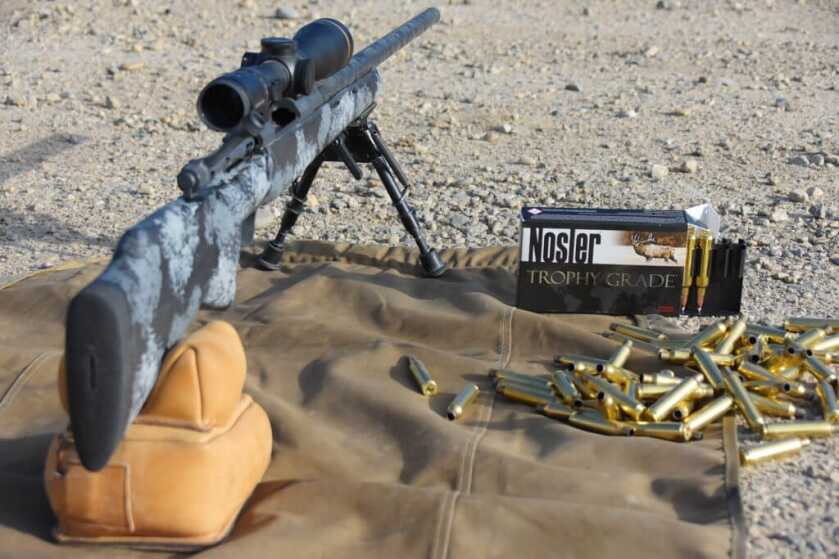
As modern technology is improving, ballistics, rifle platforms, and human capabilities are being pushed to their limits in a never-ending strive for perfection. With such developments being common, I like to look at them with an open mind in order to form accurate opinions. That said, I’ve never been on the .270 hype train, so it took some effort to clear any biases I may have for caliber preference when I received Nosler’s Model 48 Long Range Carbon rifle system which was chambered for 27 Nosler. In order to give it a fair shakedown, I laid out a few categories from which I would build my opinion. These will be bolded in sections as the review continues.
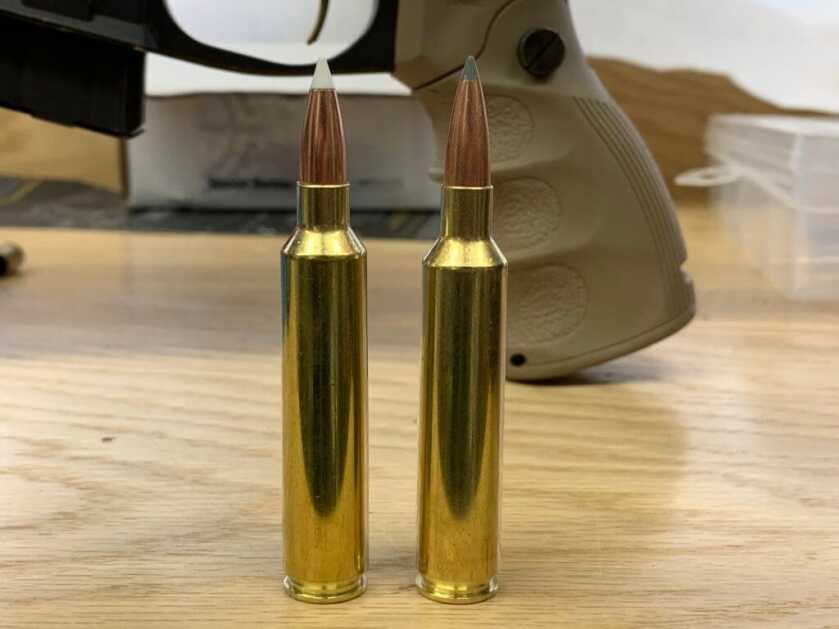
Overall Impression and Technical Specs of The M48 LRC
Upon lifting the rifle out of the box, I was pleasantly unsurprised by its weight. I have shot many lightweight, carbon laced systems, and the M48 Long Range Carbon feels just like any of the highest-end options on the market. The system feels light in the hands, weighing in at 7 pounds without any optics or accessories. I would definitely choose this rifle for carrying on the longest, toughest hunts based on this aspect alone. Other features that I appreciated from my initial glance were the Timney trigger, 5/8×24 TPI threaded muzzle, Pachmayr Decelerator recoil pad, M16 style extractor, side bolt release, glass bedded action screws & lug (discovered later in the process), and overall attractive aesthetics (fluted bolt, knurled bolt knob, cerakote, etc…).
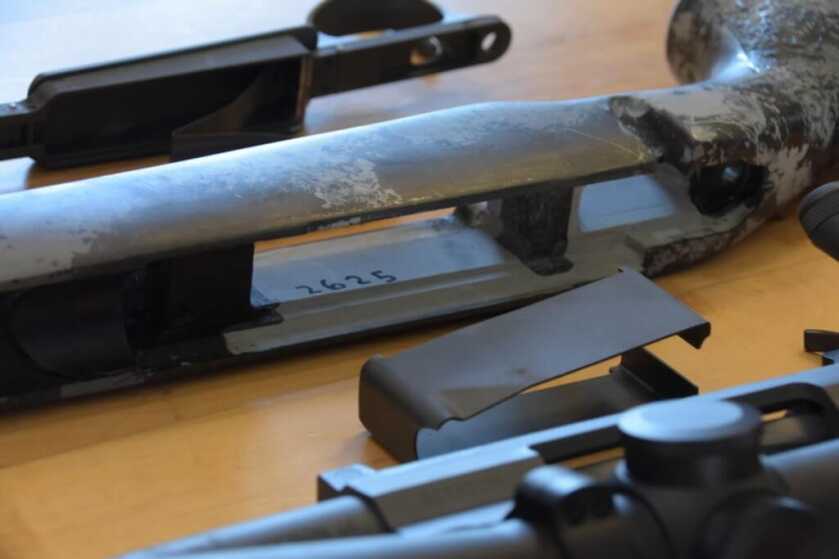
Now that we’ve established that it is, of course, a beautiful rifle: let’s pour over it from muzzle to butt in more detail. Out front, you have a Light Sendero profiled Proof Research carbon fiber barrel with a 5/8×24 TPI threaded muzzle. Inside, it has 1:8.5 twist cut riflings that will stabilize any of the heaviest projectiles. This barrel mates with M48 receiver at a trued receiver face. Behind this, the integral recoil lug is glass bedded into the manners MCS Elite Tac 100% carbon fiber stock. Attached through an aluminum pillar and steel Torx-head bolt, the aluminum hinged-floorplate bottom metal keeps things rigid while saving on weight. The bolt features a 90-degree throw, lightening cuts on the underside, a fluted surface, an m16 style extractor, and a side bolt-release on the action. Powering the gun, there is a Timney single-stage trigger with a 2-position safety. And finally, to absorb all of the recoil, the M48 features a Pachmayr Decelerator recoil pad.
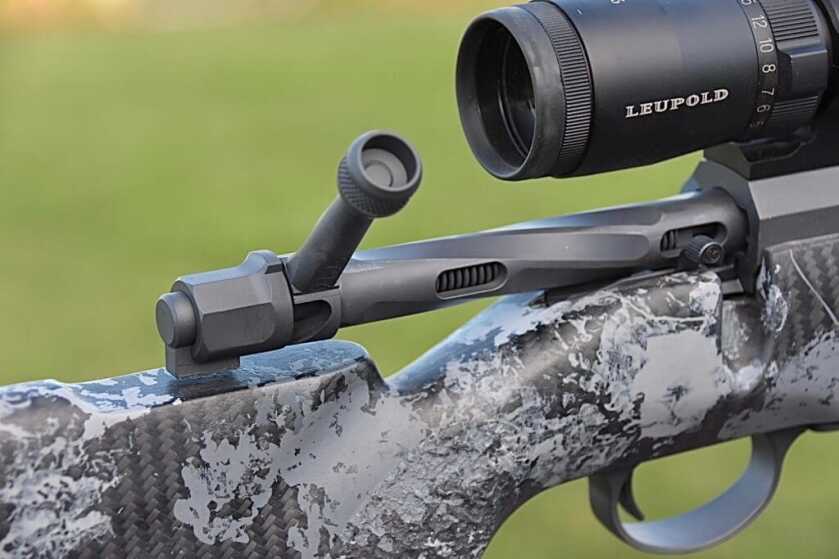
- $3,190 MSRP
- Nosler Model 48 custom action
- Sniper Grey Cerakote
- Timney Trigger with 2-position safety
- Manners MCS-T Elite Tac 100% carbon fiber stock in elite midnight camo
- 26″ PROOF Light Sendero contour carbon fiber wrapped barrel
- 5/8×24 TPI muzzle threads
- glass and aluminum pillar bedding
- hinged floorplate
- MOA Guarantee with prescribed ammunition
- accepts 2-piece Remington 700 scope bases
- 7.0 pounds
- 7 caliber offerings
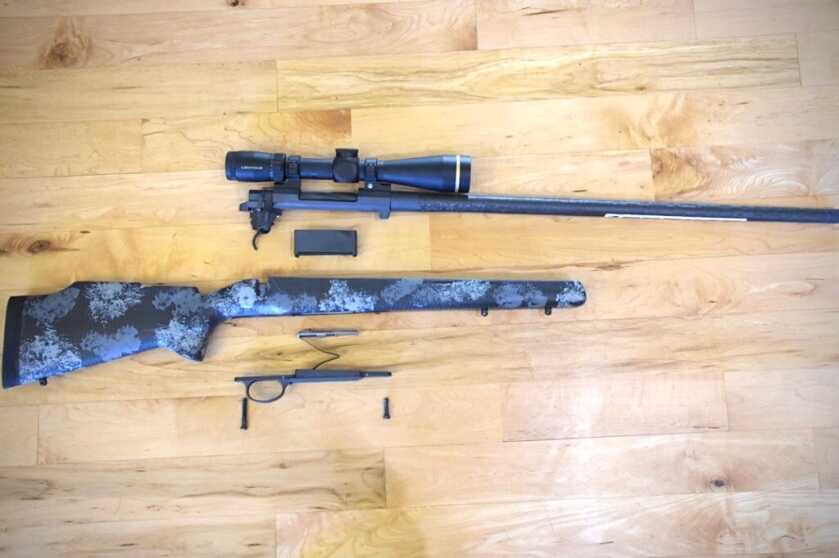
27 Nosler Ballistics & Ballistic Competitors
When choosing a hunting rifle, caliber is an important criteria. Hunting in the west, I want something that can take down deer, elk, black bear, moose, and anything else that I may go out after. Because of the terrain, I also need a caliber that will retain energy to take game at distances beyond 500 yards. Currently, I run two different calibers as my “deer gun” (6.5 SAUM) and “elk gun” (338 EDGE) because there is a delicate balance of terminal performance and obliteration of table meat, but I would love for one caliber to be the solution to my problem.
The Ammunition that I will be focusing on for the 27 Nosler are factory Nosler Trophy Grade 150 grain AccuBond and 165-grain AccuBond Long Range offerings. The first has a higher muzzle velocity of 3246 FPS (chronographed on a ProChrony Digital) with a lower G1 ballistic coefficient of 0.496 while the later has a lower muzzle velocity of 3121 FPS (chronographed) and a higher BC of 0.620. Even with a lower muzzle velocity, the 165 grain offering starts to show less drop at 700 yards than the faster 150 grain choice because of its more aerodynamic, energy retaining profile. On top of this, the 165 grain bullet begins and finishes the race with more ft/lbs of energy on target.
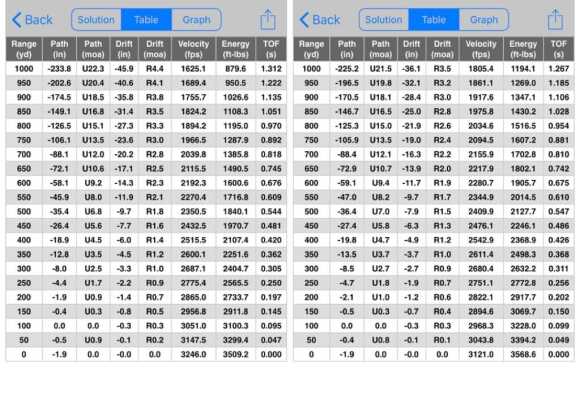
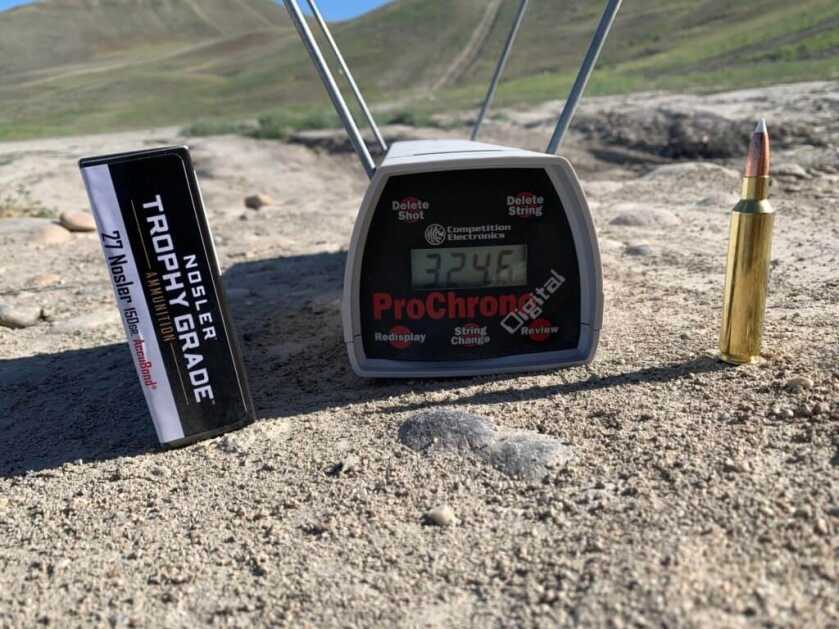
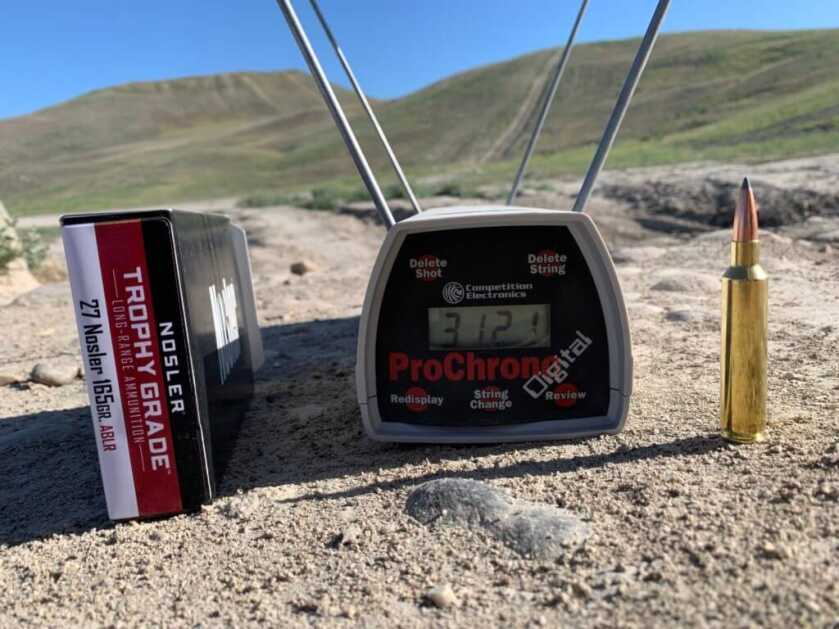
Next, we’ll compare the ballistics of the 27 Nosler (above) to those of the 270 Winchester, 270 WSM, 270 Weatherby, and 300 Win. Mag as a wildcard. I will be comparing the most common factory ammunition (IE: bullet weight) that features Nosler projectiles to keep things as fair as possible. (Please don’t tell me how you are getting 3200 FPS with a 150-grain bullet in your 270 Winchester handloads because I don’t care about that.)
Starting off, we have Federal Premium 140 grain ammunition for the 270 Winchester. This features a 140 grain Nosler AccuBond with a BC advertised at 0.496. This ammunition leaves the muzzle at 2950 FPS which gives it 10″ more drop and over 600 ft/lbs less energy at 800 yards than the 27 Nosler.
Next up, the 270 Weatherby Magnum. I’ll be comparing Nosler Trophy Grade with 150 grain AccuBond Long Range to the 27 Nosler. This cartridge spits a 150 grain ABLR with a BC of 0.591 out the muzzle at 3080 FPS. However, the 27 Nosler will have less drop overall with a disparity of 5″ at 800 yards and 241 ft/lbs more energy than the 270 Weatherby Mag.
And of course, the fiery little 270 WSM. The ammunition that I am comparing is Federal Premium 150 grain ammunition that features a Nosler partition bullet. This cartridge launches a 150 grain partition with a BC of 0.465 at a peppy 3160 FPS, making it the closest competitor to the 27 Nosler. That said, the 27 Nosler still launches the same weight bullet at ~100 FPS faster giving the Nosler the edge with less drop and more energy on target over the chubby, but beloved 270 WSM.
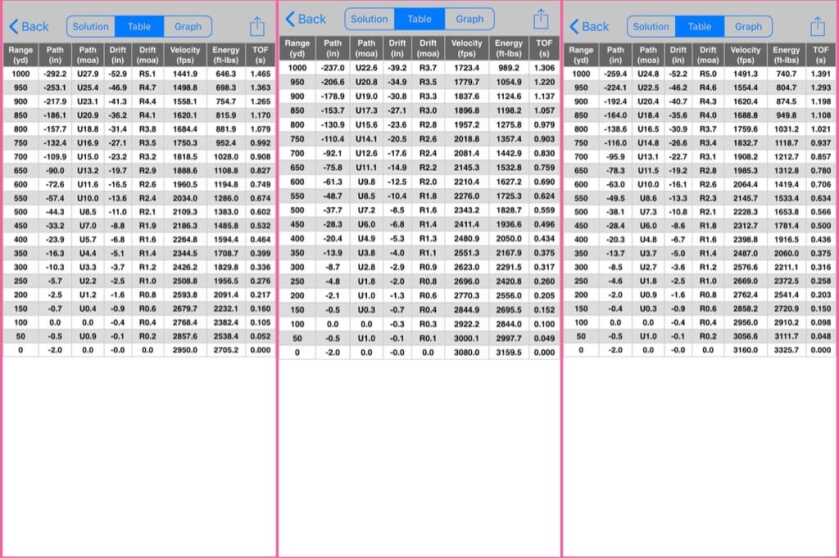
Finally, I want to compare the (arguably) most versatile North American game cartridge, the 300 Win. Mag. with the hot-rod 27 Nosler. For the comparison here, I used my personal rifle’s ballistics with the ammunition that it shoots best: Barnes Vor-Tx Long Range 190 Grain. This bullet’s BC is 0.540 and the muzzle velocity as advertised on the box (2880 FPS) is far below what I’ve measured from my Christensen Ridgeline (3013 FPS). I’ve charted my experimental results below. Using these results, I am seeing ~15 inches more drop at 800 yards from the Win. Mag, with 120 ft/lbs less energy at this distance from the Win. Mag! These results surprised me thoroughly, making me tip my hat to the 27 Nosler in respect.
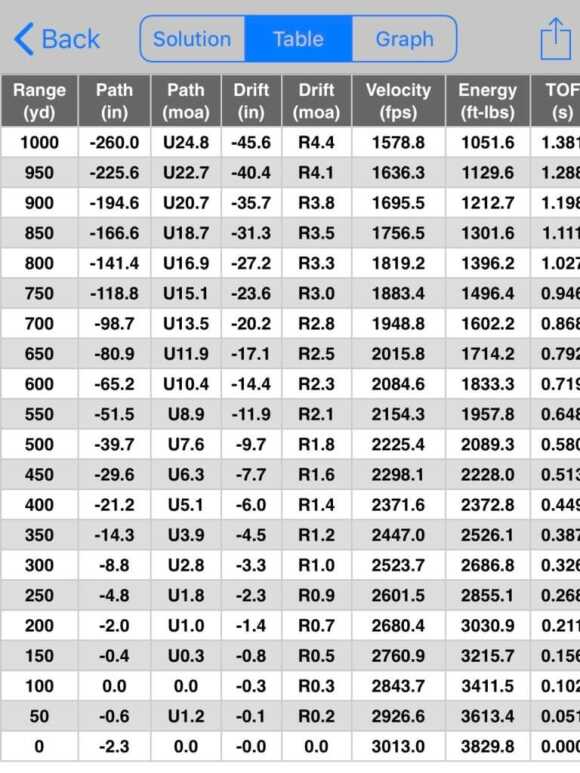
Yes, there are cartridges out there that will indeed outperform the 27 Nosler, but many of these will either be putting down far less ft/lbs of energy for taking game, or hitting the shooter with much heavier recoil. I’d describe the recoil impulse of the 27 nosler as mild when compared to other magnum cartridges. It is definitely far less than the abusive 300 Win. Mag.
Based on these results alone, I would be interested in taking the 27 Nosler on a number of hunts to see if its terminal performance is exactly what I am looking for in the ultimate hunting rifle.
Accuracy
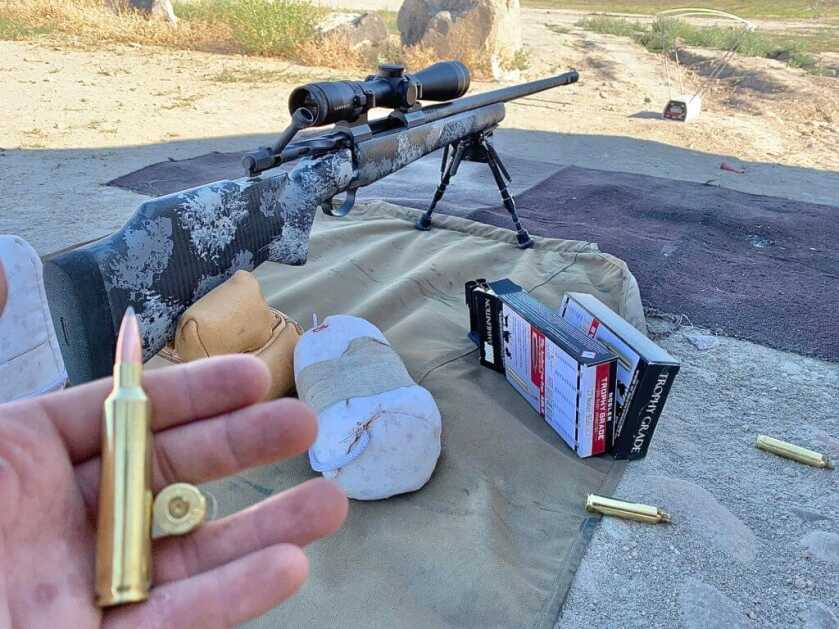
Ballistics is important, but accuracy is more-so. The Model 48 Long Range Carbon held it’s own, printing many sub-MOA groups with the largest even hovering very near 1 MOA. The following pictures show my accuracy testing results at 100 yards. I focused on two different ammunition types, tested in two different firing manners. In one scenario, I let the barrel cool ~2 minutes in-between shots. In the other, I fired the groups without waiting for the barrel to cool between shots. (The latter led to a very hot barrel after a string of 5 shots on a 100 degree day). In the pictures below, you can see that my groups were slightly larger when I did not let the barrel cool.
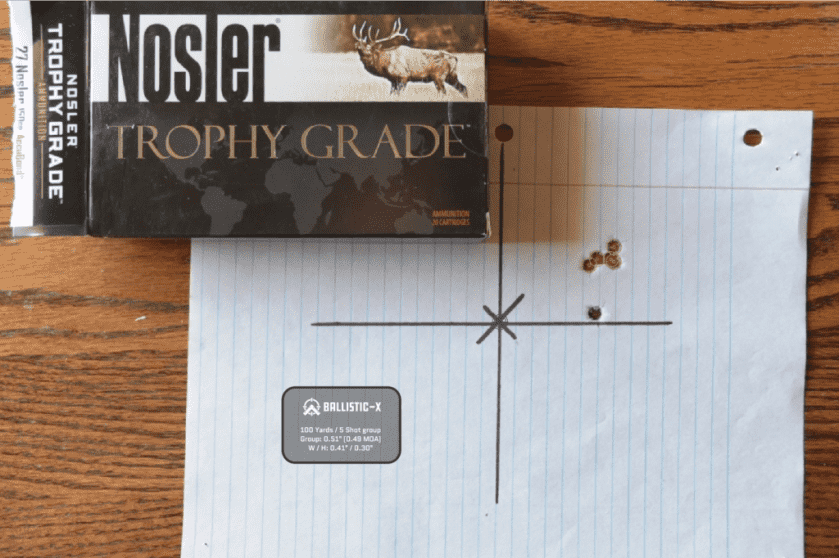
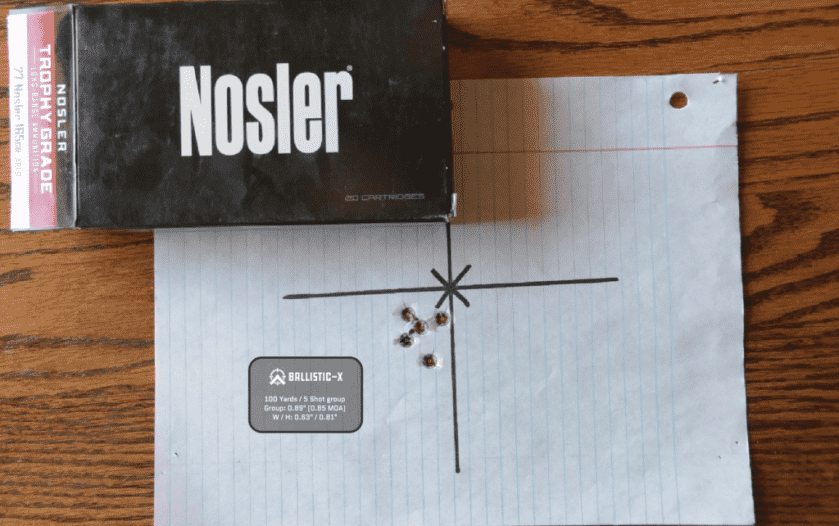
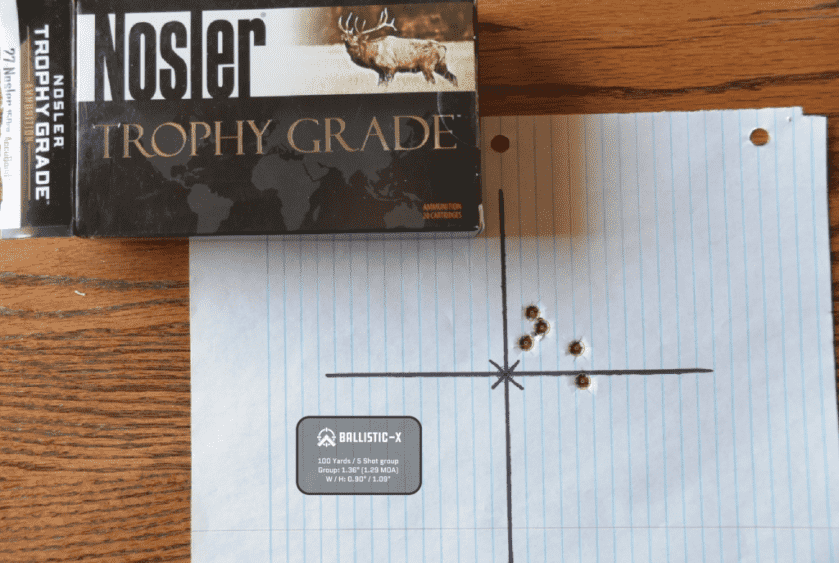
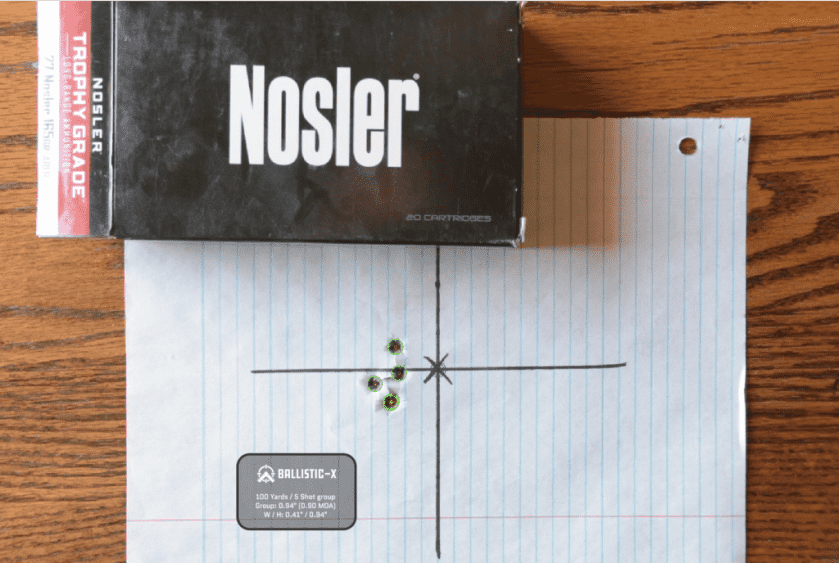
Long Range Application
I decided to put my money where my mouth was and take the remaining ammunition out to distance and see if I could get it on target. Mounted on the Nosler Model 48 Long Range Carbon, my test gun came with a Leupold 3-18×50 VX-6HD. This is an exceptional optic that aided in my long range endeavors, but one difficulty that I had involved the duplex reticle that it came with. Consequently, I had a hard time making accurate adjustments based on point of impact. Even still, I had a great time and got some shots on target. Check out the video below:
Final Thoughts
Overall, Nosler’s Model 48 Long Range Carbon is a great gun that is about as custom as you can get from a factory rifle in both options and quality. I enjoyed my testing of the 27 Nosler caliber that is so new to us all, and I would like to try actually using the caliber for hunting in the field. I was satisfied with the accuracy using the two options of ammunition that I had at the time, which hovered around the 1 MOA accuracy guarantee that Nosler backs this rifle with. And of course, I love that this rifle tips the scale at a mere 7 pounds. After my experience with it, I wouldn’t hesitate to recommend the Model 48 Long Range Carbon to an interested party.
Click HERE to learn more about the Model 48 Long Range Carbon!
More Images:
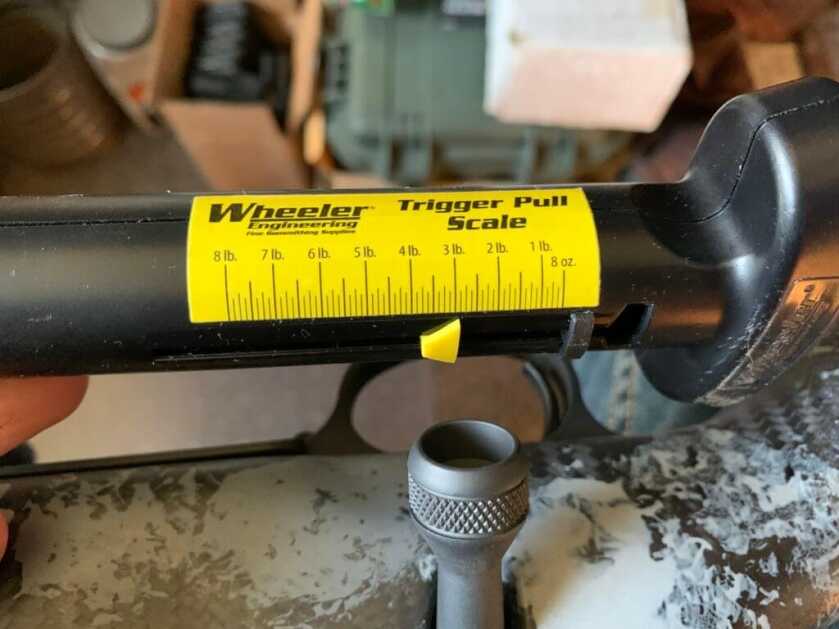
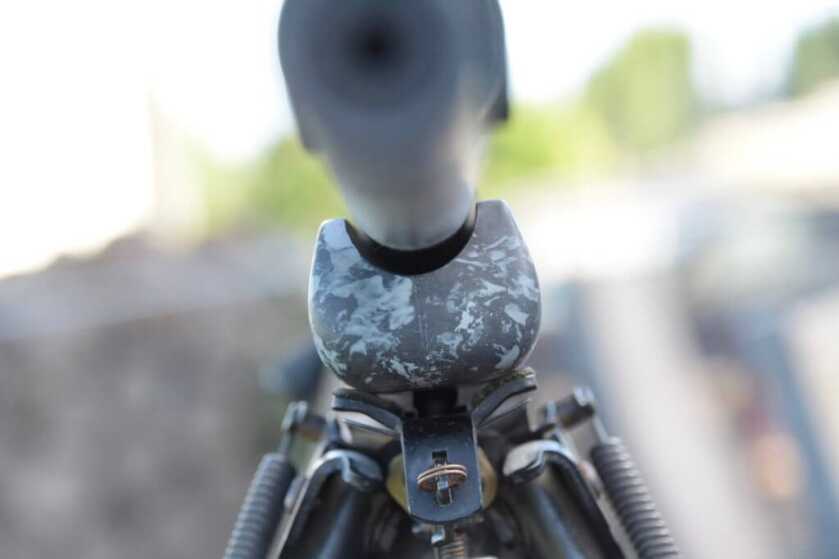
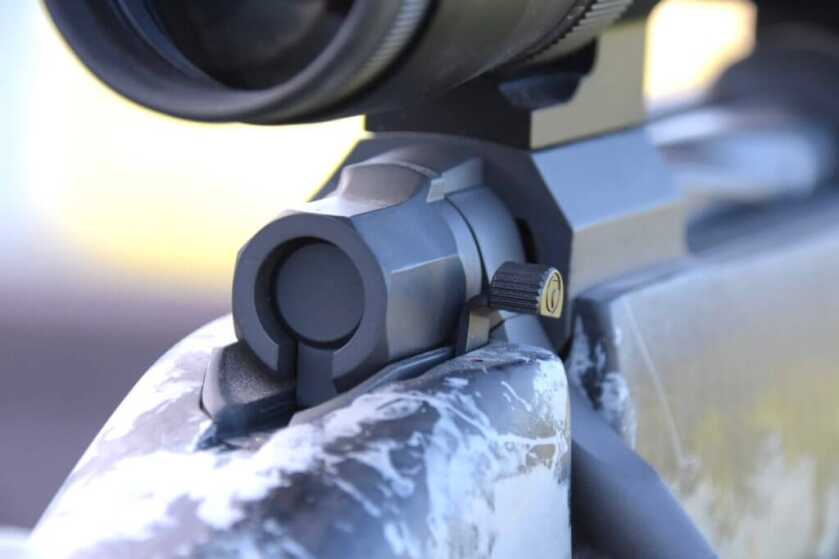
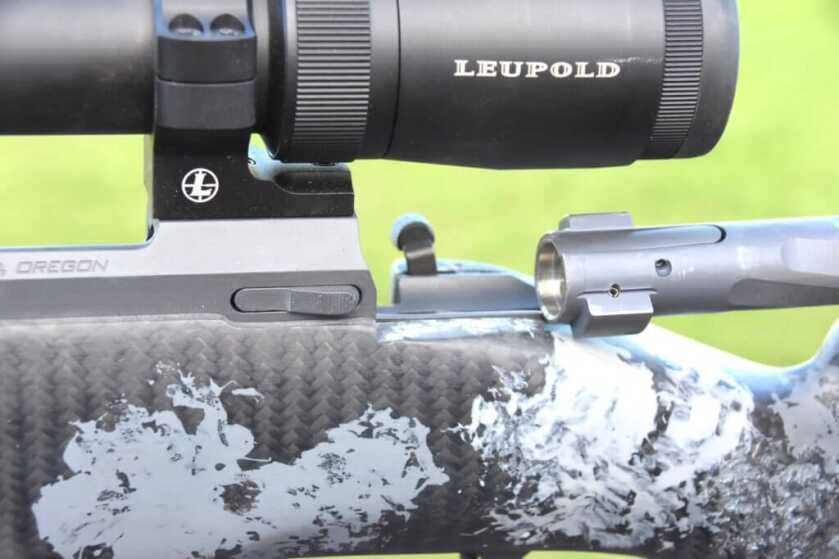
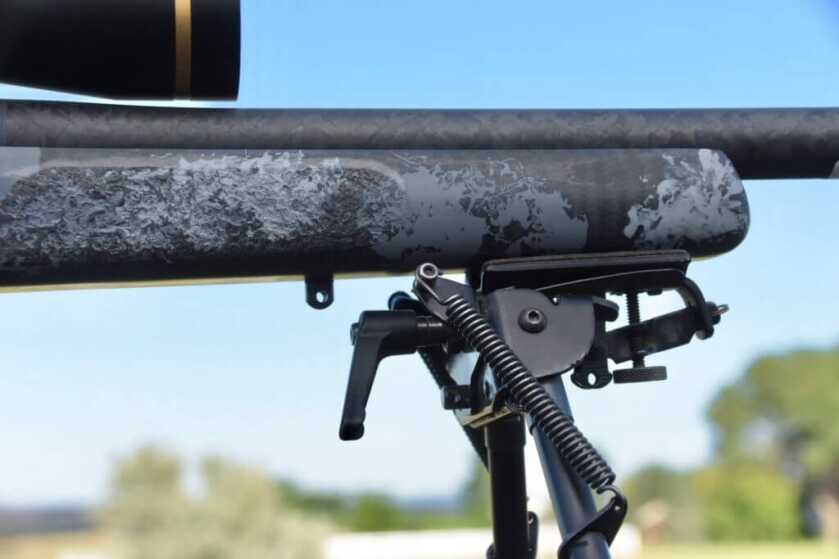
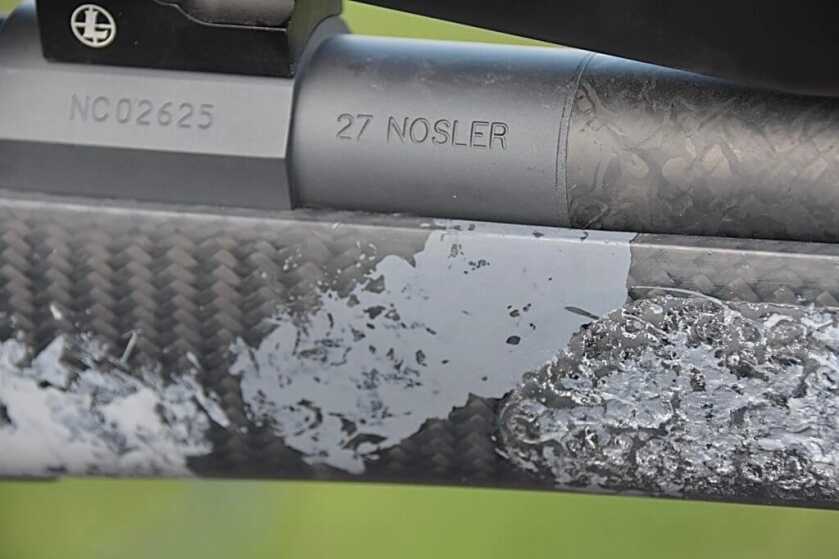
***Buy and Sell on GunsAmerica! All Local Sales are FREE!***



It’s fun to read comparisons of modern calibers (and rifles). But it’s also very interesting to see how the old .270 holds up against modern calibers. Go compare ballistics between the .270 and 7mm Mag and you’ll see what I mean.
It’s the same with the .260 Rem vs. 6.5 Creedmore or the 6mm Rem vs the 6mm Creed. Both Remington calibers are equal to or better performers. But it’s fun to see new stuff on the market.
Buy and shoot what you like. Enjoy reading about the new stuff… But the chances are that the rifle you have in your safe is up to the task – whatever that is.
Thank you for a great article and showing a truly impressive system. Around 450 the 27 Nos just starts to leave the 300 Win Mag behind and I thought maybe the barrel lengths might be different? For example some fps can be lost using a 24″ on a 300 instead of a 26″ and IF it’s a 22″ then even more can vary. As for the recoil you mentioned, that could be less from a 26″ versus a 22″ as well. I also wonder if you think that 190 is the ideal 300 Win Mag weight and best BC? What would a cutting edge 200-225 look like through a 26″ 300 Win Mag? Could you have picked more comparable BC’s in the other calibers? Was the twist rate ideal for each? Considering 300 Win Mag, I have looked at one 210 gr with a BC up to .625 that may have shown a different story in the right 26″ barrel, depending on velocity. Did you test the other calibers using the same make, model, and length of barrel as the test rifle? If not, could you give me some specifics of the other rifles? Could you please send out the additional info? Thank you again for a great article.
Have never been a fan of 277 Cal. You have the 6.5mm and 7mm. Just don’t see any reason for it. But those who enjoy it, enjoy.
By the same token, of the most common versions of the 3 calibers you mention, the 270 is the oldest, so why bother with a 6.5 or 7? Ridiculous argument you posit.
It’s fun to discuss all the different calibers. My Western hunting guns are a 6.5 Creedmoor and a 7mm mag. I have hunted pronghorn and elk extensively. That said, comparing bullet drop at 700-800 yds is the ultimate in splitting hairs. Even if a shot like that were available, most of us don’t have the rifle, optics, rangefinder and yes, skill for shots at that range (and even less) to be ethical.
I agree to some extent. But it’d be unfair to assume that there aren’t any people that have the skills to be confident at that range. I am very competent myself and have taken multiple game animals in the 900-1000 yard range; an elk at 1007, a deer at 935, and a coyote at 1005 immediately come to mind. (all with one shot fired) And I know many people that are even more skilled than myself. As equipment improves and people practice at those ranges, these successful shots will become more common.
Sorry I stopped reading at $3 100
Yeap me too!!!
Funny guys paying a few grand for rifle and another 1500 for scope. I have a Ruger American in 6.5 Creedmore and I have all of 600 bucks into and it will shoot with any gun out there. .37″ groups consistently. What a joke!!
Nosler Motto – “You can buy better but you can’t pay more”
3800 fp energy with a 7 lb rifle (stretch that 8 1/2 with a monster scope)= feeling the recoil. Plus 8 1/8 lb isn’t super light for a lot of mountain carry.
I find it interesting all the craze about long range shooting for the past few years. All of these new cartridges bidding for their little niche, all of these cartridges are very expensive and probably won’t be around in 15 years! Try finding .338 Ulti Mag brass or .300 RUM brass !
I know what you mean! I form my own 338 EDGE brass from 300 RUM, so I know how hard it is to find. Although, I’d argue that the 300 RUM is actually incredibly popular (at least in western hunting), so the low availability is probably due to the high demand.
Remington Sort Action Ulti-Mags were a failure, as well a Winchester WSSM it seems to me
For 300 RUM Brass go to Duck Creek Sporting Goods. Denny has hard to find brass
Interesting but a 270 is still a tweener; in between bullet sizes that can do better as a varmint or big game rifle.
I am hesitant to agree on this. In the coming years, results from hunters using this cartridge will either affirm or deny this statement. I know many people that swear by the 270 WSM.
Lol. Tweener. Wrong.
I do wish writers would compare the same bullet in the same calibers to see how they compare. All seem to use a certain bullet with certain ballistics to either say how good or how bad a cartridge is when compared to others of the same caliber.
I was wondering when the .270 was going to be hot rodded. I put a 1-8 twist barrel on my model 70 270 wsm and have been using 165 gr Matrix bullets. 2986 ft per second. Comparable performance. I probably have about the same amount of money in mine as the going price of this gun.
*peek